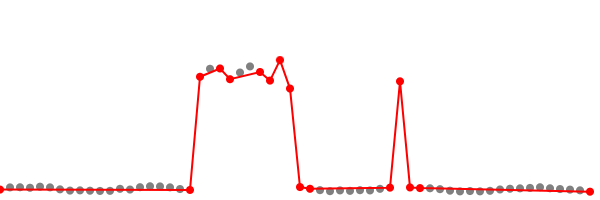Smarter Sampling, Sharper Signals: How Qube Cuts Bandwidth and Power Use in Methane Monitoring
Continuous monitoring provides a clear advantage: it constantly captures emissions data 24 hours a day. But this volume of data comes at a significant cost of bandwidth and power. How can operators maintain reliable monitoring without straining their networks or batteries? Qube solves this by combining efficient power use with intelligent sampling techniques. Here we review the advances in: 1) sampling, 2) data compression, and 3) payload frequency that make this possible.
Interested in seeing how 24/7 continuous monitoring can optimize your operations?
Catch Every Event with Dynamic Sampling
Timing is critical during emission events. Qube sensors sample every 2-3 seconds, fast enough to capture short-lived and intermittent leaks before they go unnoticed. But this high frequency sampling also generates a large data load.
Qube addresses this with a dynamic approach:
Stable periods: When readings are flat, the device stores only essential data points needed to accurately reconstruct the signal via interpolation.
Spike events: When methane levels rise, the device increases its sampling rate to capture the full shape and duration of the event.
This adaptive sampling allows operators to retain critical emissions information without overwhelming data systems.
Figure 1. Variable sampling frequency means that higher frequency sampling occurs during periods of detected methane spikes thus saving data capacity when it’s needed most.
Compression Delivered at the Device Level
To manage the volume of high-frequency data, Qube devices run a compression algorithm locally. The system evaluates date in real time and selects only the most relevant points to transmit thus reducing bandwidth without sacrificing detail. Below is a simplified example of the compression algorithm in action.
Figure 2. Reduced power consumption through payload frequency modulation at the device level. The grey data points are each sampling point in time and the red data points are the relevant data points transmitted to the platform.
Reducing Power Use with Smarter Transmission
The LTE modem is often the largest power consumer in an IoT sensor. Qube minimizes this load with a power-conscious transmission strategy:
Scheduled uploads: Data is batched and transmitted once per hour under normal conditions, allowing the modem to remain off between uploads.
Local buffering: In low-signal areas, the device stores up to eight hours of data, ensuring no loss during outages.
Real-time alerts: If a methane spike is detected, the device transmits the data immediately to support timely operator response.
Why It Matters for Oil & Gas Operators
Extended battery life: Smarter sampling and batching mean fewer recharge cycles and lower maintenance costs.
Reduced data costs: Compressing and prioritizing traffic slashes cellular bills—especially critical in remote deployments.
Timely leak response: Immediate uplinking of anomalous readings empowers rapid interventions, minimizing product loss and compliance risk.
Scalable deployment: Efficient bandwidth use allows operators to monitor more sites without overloading networks.
Book a Demo
Experience real-time methane monitoring that’s both cost-effective and power-conscious.
Book a demo with our team today.
Related FAQs
Q: How long can the device buffer data in no-signal areas?
A: Up to 8 hours of samples are stored on-device, then forwarded once connectivity returns.
Interested in operational examples how Qube Technologies is driving emissions reduction and sustainability?
Explore our other resources and case studies or reach out directly.


